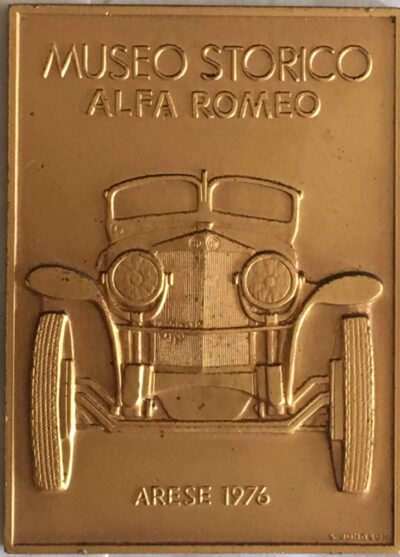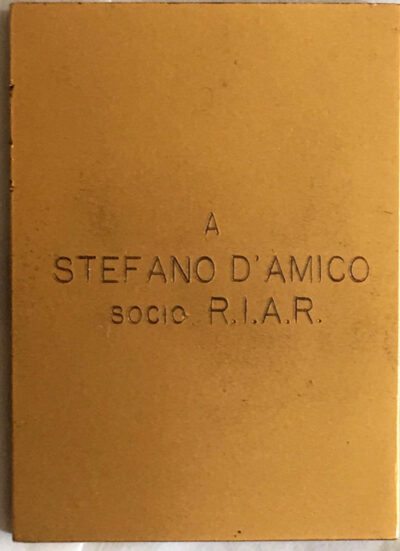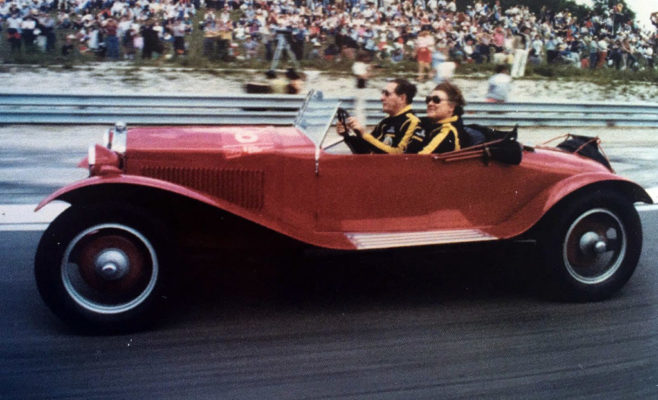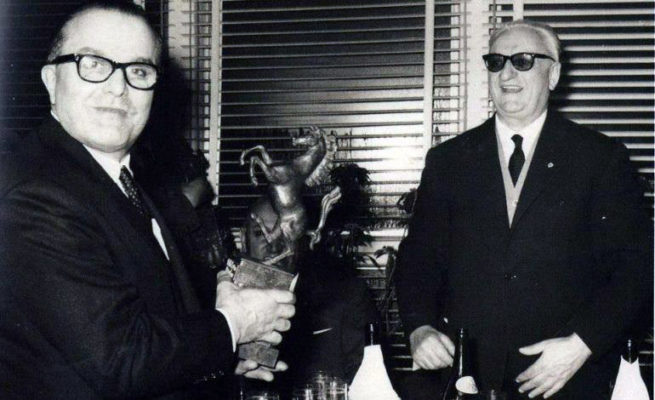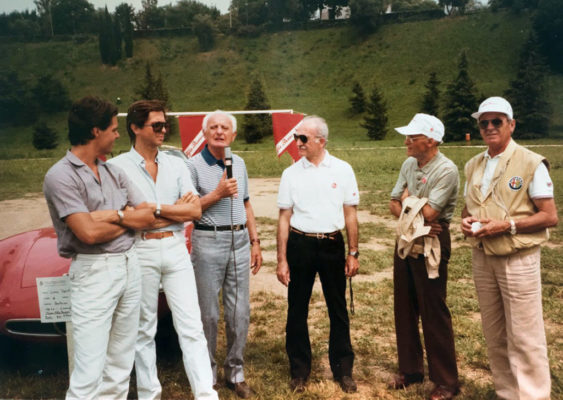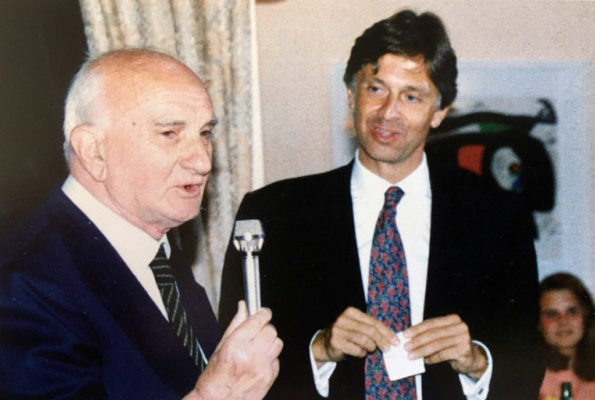1975 – 2017
40 years of RIAR (Registro Italiano Alfa Romeo)
Let there be the Riar
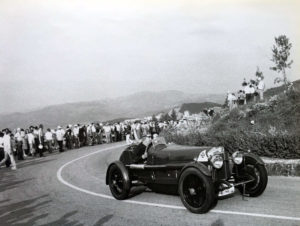
In fact, Lamberto Morini had already introduced me to his friends at Portello, in Milan, in Via Gattamelata, Riar’s headquarters at the time – after the historical one dated 1962 in Rome at Villino delle Fate – located in the beautiful Coppedè district, in Via Brenta 7, and just before that, in Arese at the new Alfa Romeo Museum. The Riar’s Chairman at the time was Count Giovanni (Giovannino or Count Johnny) Lurani Cernuschi, who succeeded Francesco Santovetti in 1968.
At Alfa Romeo the powerful Director of External Relationships (SECEN REPU) Camillo Marchetti ruled with an iron fist, he great man too, and a dear friend for over 40 years. As soon as we arrived, I felt at home. Thanks to Gigi Bonfanti, I became fast friend with Luigi Fusi, who was fully active in setting up the newly created Museum (which opened in 1976) and Gonzalo Maria Alvarez who, together with Elvira Ruocco, set up and organised the Documentation Centre and the archive in Arese, supported by a very young Mimmo Magro, who later became Manager of the Museum.
Commemorative bronze plaque minted for the grand opening of the Alfa Romeo Museum in Arese in 1976.
From Eni Roma I moved to Milan to be closer to the operating companies of the Eni Group and to earn a little more money, but after all I liked to get closer and closer to what was becoming my world and my passion.
Thanks to Lamberto Morini, I was just in time to meet the first Riar secretary, Mr. Angelo Bordoni, who also died too young replaced by another brilliant executive of Alfa Romeo, a polyglot and true aristocrat, Baron Raimondo Corsi di Turri. A true gentleman and a friend. Weekend trips to Balocco and the surrounding area were often organised together with other young Milan-based enthusiasts. There were Roy and Edna Slater, Guido Delli Ponti, Eugenio Ballarin, Pasquale Oliveri, often even test driver Bruno Bonini and many others. We were a group of close friends and always on the move to find spare parts, old and abandoned cars, spend time driving around with the Alfa Romeos or listen non-stop to a record with the noise of the cars from the Museum and the fascinating stories of Lurani, Fusi, Bonini, and Guidotti.
In Milan, near the Monumental Cemetery, I remember a heavenly garage, the destination of many pilgrimages: it was owned by Livio Guarneri who had rebuilt several 33 Stradale cars with the original parts given by Autodelta to sell them, if I remember correctly, at a price of 10 or 15 million Italian liras each, documents included! None of us had that kind of money, just dreams and wishes! Near Arese then, in a different workshop towards Rho, another historic car lied abandoned in a corner. It was an official GTAm, former Hezeman, barely covered by a falling canopy and available for sale for two or three million Italian liras. How many talks, how many projects, …
At the Riar, of which I officially became a member in 1975 along with Vito da Prato, Luigi “Cocò” Chinetti (already an AR driver victorious at Les Mans in 1932 with Nuvolari and the 8C car, importer of Ferrari cars in the USA and founder of NART, North American Racing Team), Alfredo Celli, Count Emilio Gritti Morlacchi, and a few others. At the time, the members were about a hundred, all well-educated people, great fans and deep expert of the sector. The Riar’s manager was Luigi Fusi, who died in 1996. At the end of the eighties, Bruno Bonini took over this role, one of the seven great Alfa Romeo test drivers who died in a race accident at the SPA in 1994 while driving a GTA of the Portello team. He, who had tested those cars in 1965. The faithful, legendary and unforgettable accountant Giuseppe Casazza was the Riar Treasurer, a position already held at the ACI Milano and Scuderia Ambrosiana: a careful and strict custodian of Riar’s accounting books drawn up exclusively with a small pointed pencil. Heroic times now bygone populated by people of great professionalism, fairness, human spirit and character.
At Alfa Romeo, as Camillo Marchetti recalled in an interview for “Il Quadrifoglio”, there was a human heritage that I had rarely found and that now has completely disappeared. The old man taught the young and conveyed, in addition to his experience, also education, traditions and knowledge thus allowing the company to preserve and hand down its precious intangible heritage. From the humblest worker to the top executives, one could appreciate not only their professionalism but also their kind and polite manners, their willingness and pride originating from being part of such a legendary and prestigious Company. And it was nice to sit at the table with these gentlemen. From the last worker to the Chairman.
